
Tea and temples on a two-wheel trip through Thailand’s Golden Triangle, once infamous for opium production
- Thailand’s Golden Triangle, once a centre of opium production, offers sweeping views of mountains and plains, and has border towns full of character
- A scooter trip through the region passes tea plantations, and villages inhabited by descendants of Chinese Nationalist soldiers who settled there
“You won’t be taking this far?” asks the assistant at the motorbike rental shop in Chiang Mai. “This Honda is new.”
“Relax,” I say, “I just need it to go to the market from time to time.”
She gives me the key but I sense reticence, as if she knows I’m going to push the basic automatic scooter to the very limits of its range.

South Korea’s tourist ‘X factor’? Traditional houses become unique hotels
I’ve read that the Thai government has done much to suppress illicit activities in recent years, but less can be said for Laos and Myanmar. In the latter, civil conflict is raging and people are no doubt doing whatever they can to make ends meet.

The road curves through valleys furnished with fruit plantations and iron-roofed huts, and our pace remains sedate all the way to our first scheduled stop, Ban Arunothai village, the gate of which, to my surprise, is adorned with Chinese characters.
We pull up outside a straight-out-of-China restaurant called Tayong in English, but Dayong Mianguan (” the courageous noodle house”) in Chinese. Red lanterns are suspended from the ceiling and idioms rendered in traditional characters decorate the wooden walls.
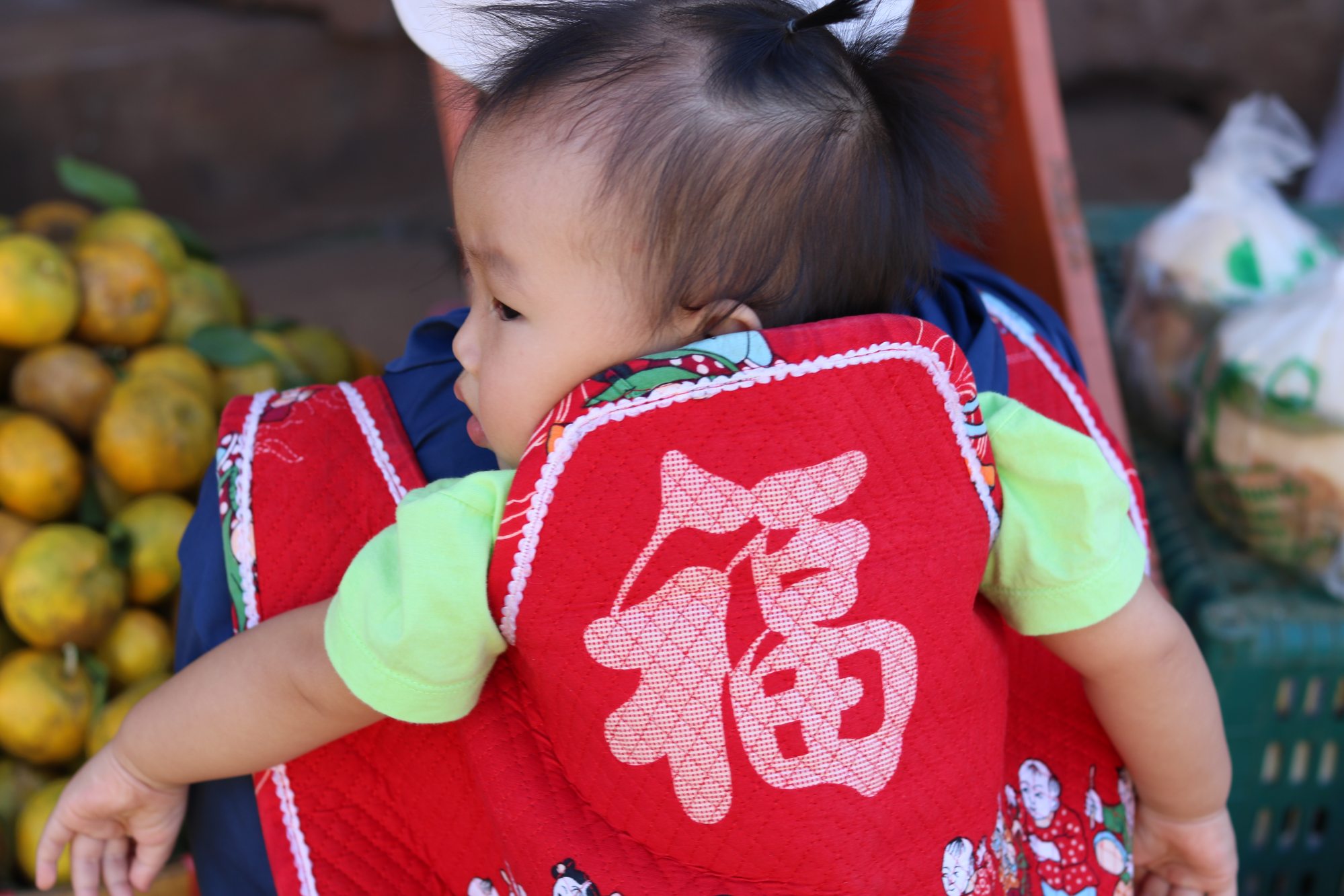
We loop around the village and peer at the Myanmar border, which is less than 1km away according to the map. We come upon a border station but it’s unmanned and, just beside it, a dirt road appears to lead directly into the neighbouring country.
We can’t resist following it until Google has us trespassing in Myanmar. For a minute, and the purpose of a selfie, we are illegal immigrants.
The road eastward snakes into hilly terrain. Every second village we pass is Chinese, discernible by dangling red lanterns, although some residents have converted to Christianity judging by the churches and hillside crosses.

This was once Thailand’s main opium growing region, but when authorities cracked down on the drug, tea was seen as a good alternative for the Chinese-in-exile to harvest. And we’re soon enjoying soaring vistas of slopes covered in tea shrubs that frame a narrow passage of tarmac until we encounter unfarmable canyons – the kind of terrain that forms frontiers.
The road leads into the Do Pha Hom Pok National Park and our trip into the clouds culminates at the Sui Thang Viewpoint, from where we look down onto a patchwork of Thai farms like gods admiring creation.
In lowland Fang we find a street-food dinner and a guest house situated amid an orange plantation. We should sleep solidly given the day’s exertions but night critters chorusing in the darkness keep us up until the early hours.
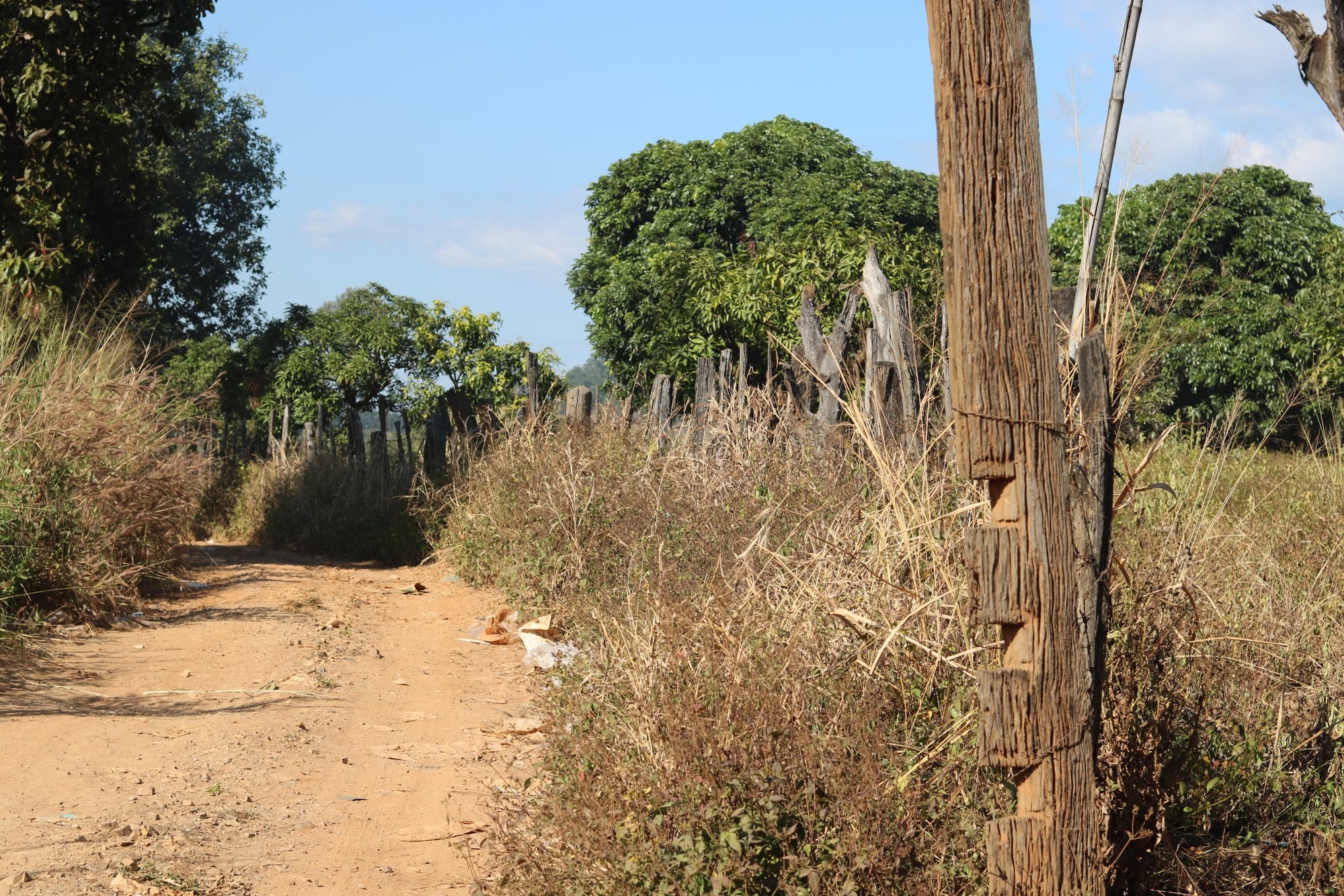
The dawn air carries a bouquet of farm scents and a sense that fine country roads beckon, so we head off before the morning mist has cleared.
It’s easy riding all the way to Ban Tha Ton, a quaint town bisected by the Kok river and overlooked by a white Buddha statue perched on a hillside.
Motorbike challenge: riding Thailand's Mae Hong Son Loop
Much of the journey to Thailand’s northernmost town of Mae Sai traces the barbed wire that separates the country from Myanmar, and is punctuated by small checkpoints.
Usually, an encounter with armed soldiers on a remote country road near a war zone would spell trouble, but we’re directed to the side of the road, our passports are checked and we’re waved on with habitual kindness and no fuss.
The time lost to these performances is compensated for with the views on both sides of the border.
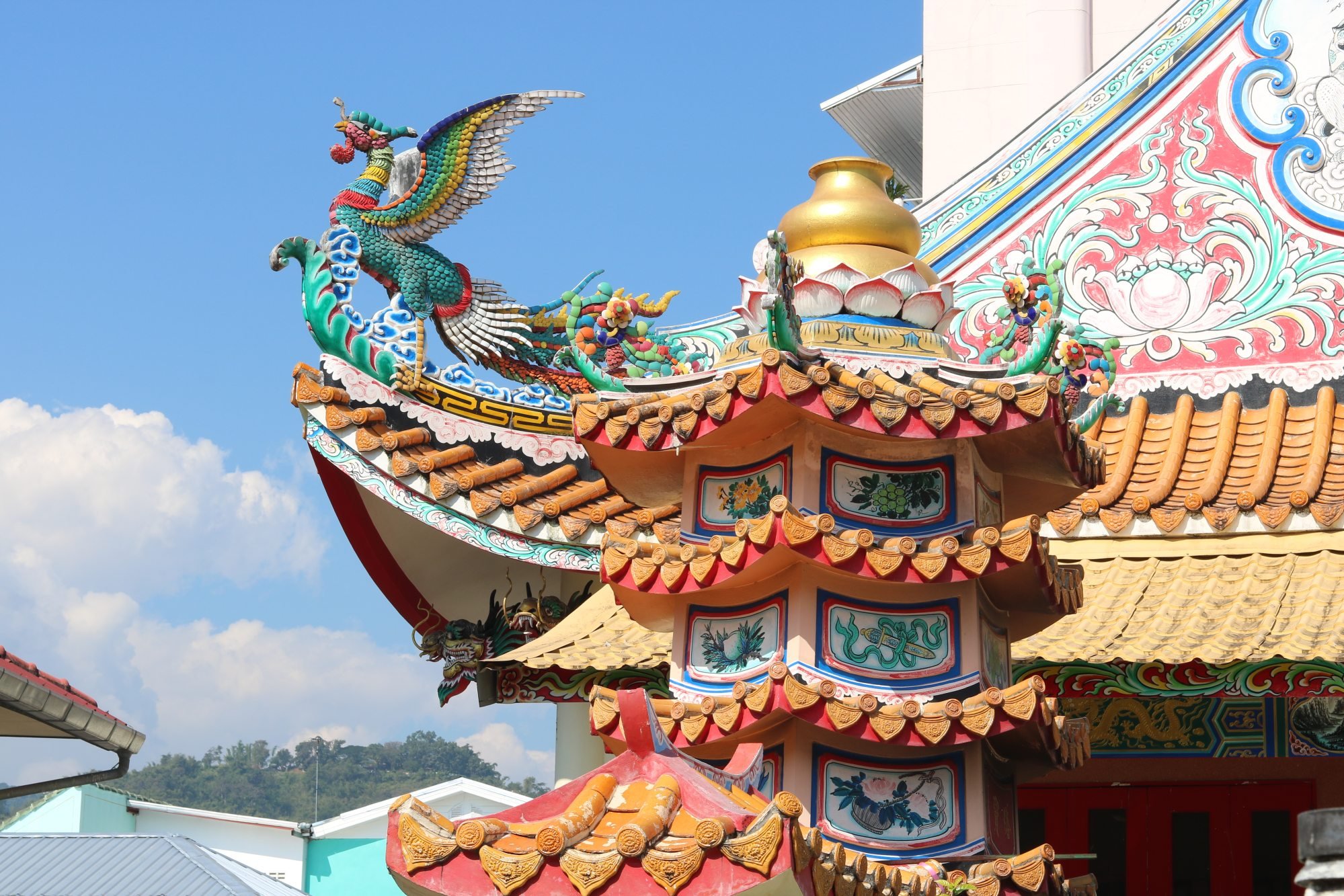
Mae Sai proves to be a classic border town, a city located in two countries that belongs to nowhere. All roads lead to the border checkpoint – an austere, blue-grey building – even though it is closed when we arrive, either because of the ongoing war on the far side or the pandemic, we don’t know which.
Here, too, there’s a pronounced Thai-Chinese presence, not least in a Chinese temple that doubles as a gateway to a retail emporium selling grown-in-Thailand oolong tea. This feeds into a covered market where the produce of Myanmar, China and Thailand line the labyrinthine passageways like an old world bazaar.
Behind the market stands the imposing Scorpion Temple, which is entered up a serpent-lined staircase. The stiff climb earns us unimpeded views of Tachileik, the city on the Myanmar side of the border. Shan State may be witnessing some of the worst fighting between rebels and forces loyal to the ruling junta but Tachileik looks peaceful.
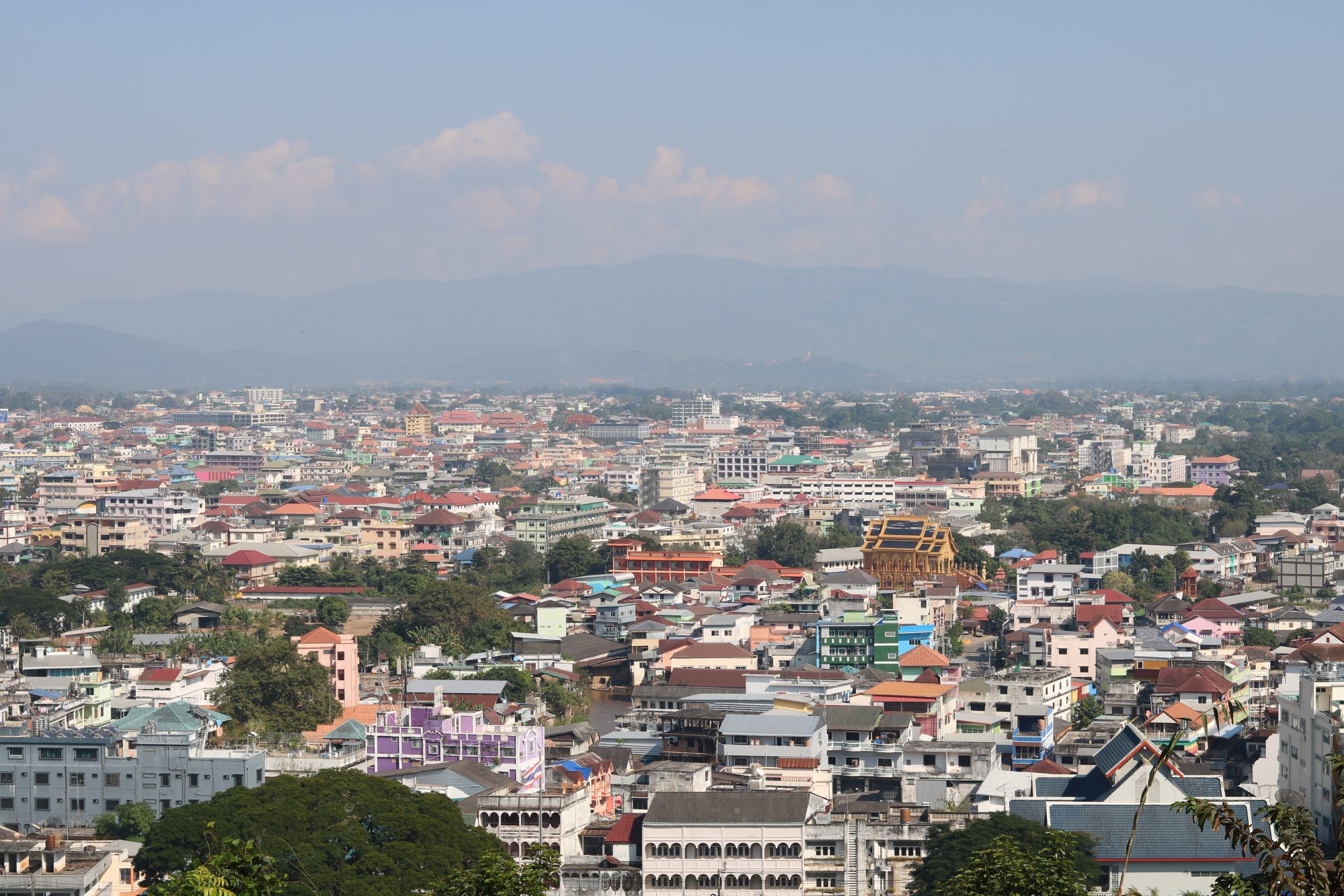
A late lunch sees us depart for Chiang Rai as the afternoon sun is beginning to tinge the highway a regal shade of Burmese amber. Sixty kilometres might not sound like much but taking a scooter on a Thai trunk road, where trucks overburdened with freight wrestle for space with SUVs, is not for the fainthearted, and we arrive in the city after dark, feeling more than a little rattled.
The following morning is all we have to visit Chiang Rai’s principal sites: its elaborate golden clock tower; the gaudy Blue Temple, just north of the Kok river; and the White Temple, located off the road to Chiang Mai, all of which are more photogenic than historically relevant, having been constructed in recent decades.
The antique wats and hill-tribe villages surrounding this 800-year-old city will have to wait for a return tour, as we’re keen to get back to Chiang Mai before sundown.
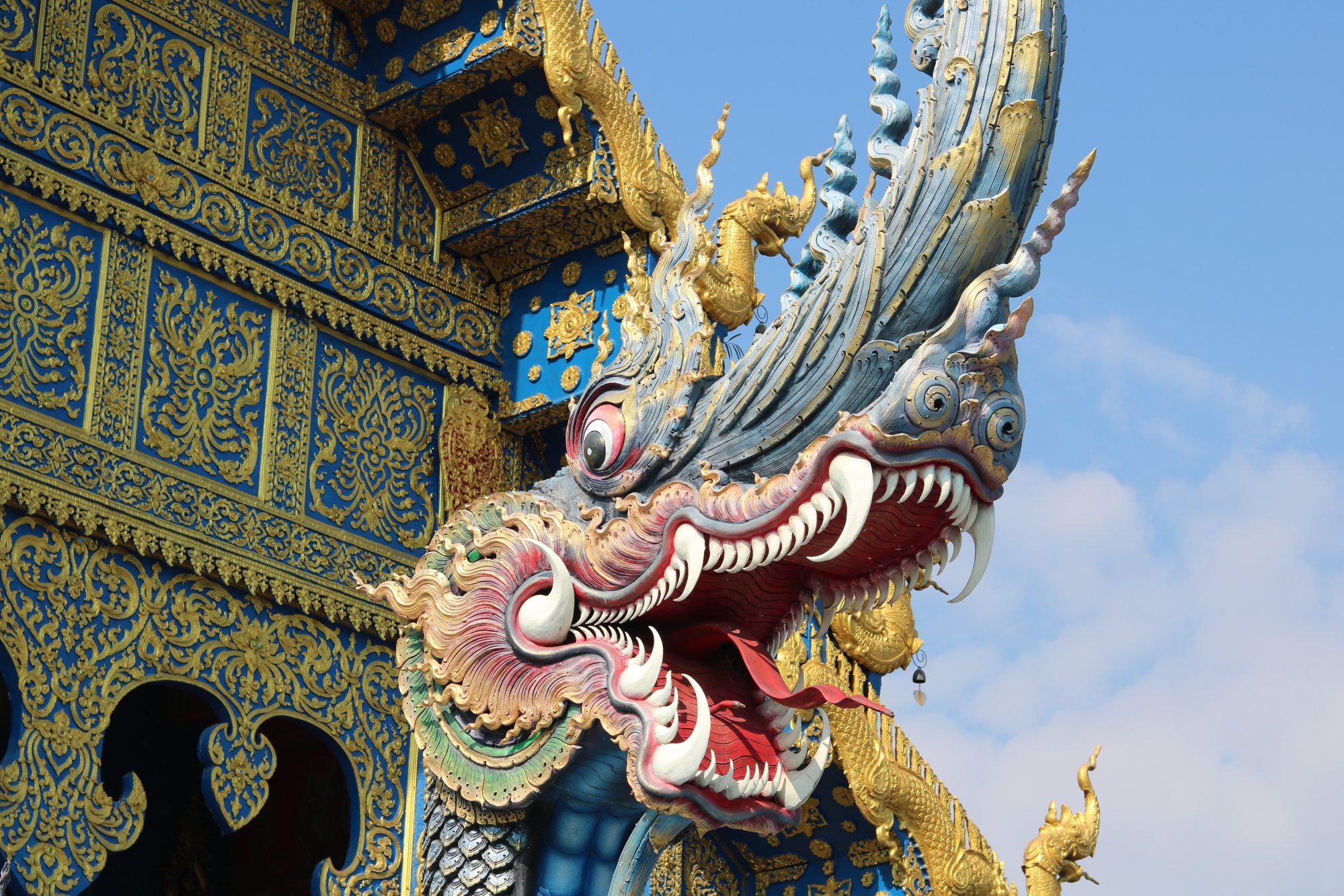
A three-lane highway bisects the ocean of trees that stand between the two northern provincial capitals. It’s hard driving, with periodic breaks to shake away the stiffness in our limbs. The aphorism “should have got a bigger bike” races through my mind with the roar of each passing Kawasaki.
Long before we reach the Chiang Mai city limits, fatigue is taking its toll. Apparently the god of the road recognises our plight, as a sign in Wiang Pa Pao district directs us to bubbling hot springs located roadside and flanked by snack vendors.
I remove my shoes and dip my aching legs into water boiled in the earth’s crust. As I sit, slowly recharging, it’s comforting to consider the planet’s ancient processes continuing below our feet, oblivious to surface-dwelling humans busying about on motorbikes like petrol-powered ants.
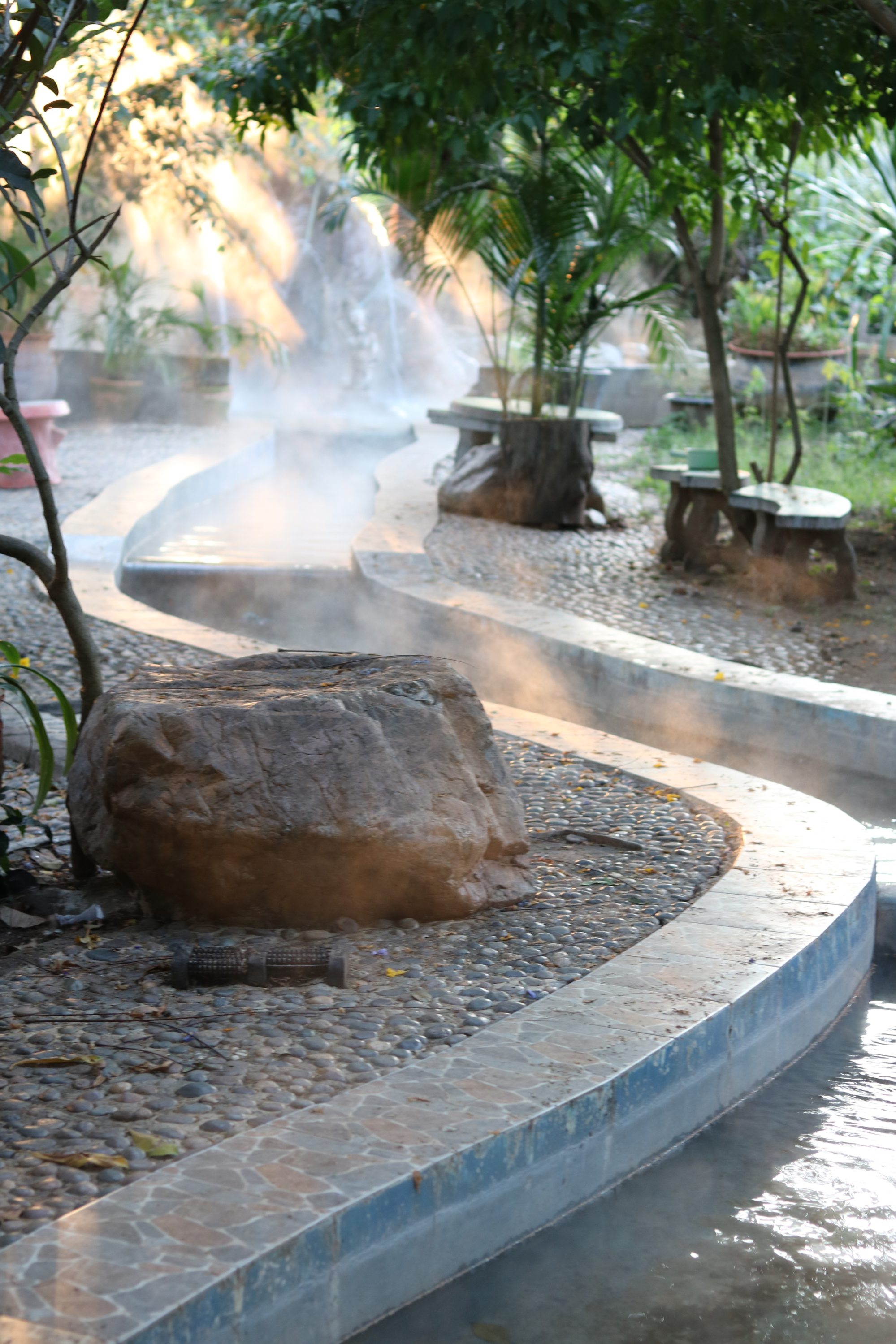
“Oblivious” is not how you’d describe the rental assistant when I eventually return the scooter in Chiang Mai.
“There’s no petrol left, there’s a scratch on the back and the tyres are all worn,” she complains, before grudgingly returning my deposit.
“Well, it’s a busy city,” I reply, gesturing to the old city wall ring road, where countless motorbikes buzz by like insects.

